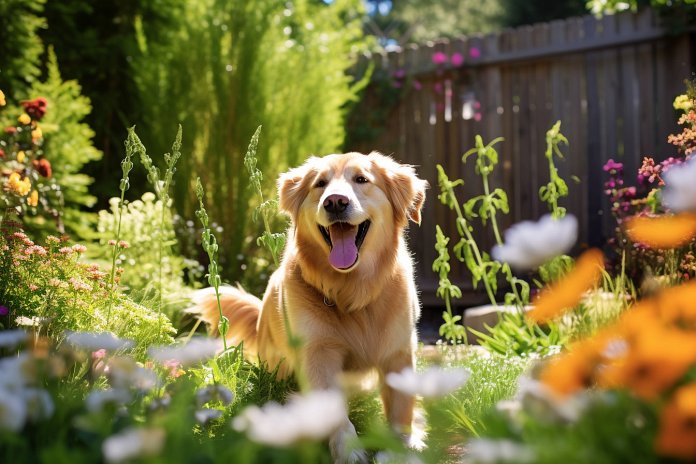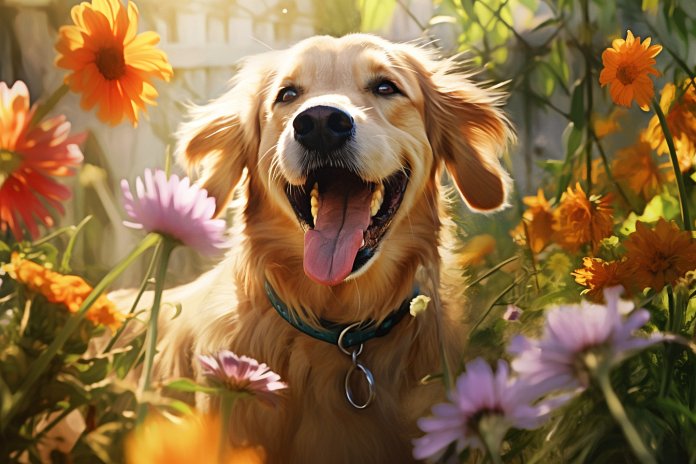
Are you considering breeding your dog or are you worried about your intact dog getting pregnant? If so, you’re reading this article to find out when dogs can get pregnant. Generally, dogs experience their first estrus cycle, the part of the reproductive cycle when they can become pregnant, at around six months of age. Most dogs go into heat twice a year. However, there are other factors that can affect when a dog can get pregnant, so let’s take a closer look at the estrus cycle and what it means for the possibility of puppies.
Signs Your Dog is in Heat
If you’ve never had an intact female dog before, it may take some time to figure out when your dog is in heat. The first sign is swelling of the external vulva, but this may not be immediately noticeable. Vaginal bleeding is often the earliest sign, which may become apparent several days after estrus begins. Some dogs experience only a small amount of discharge, while others have heavy bleeding. Your dog may also pay more attention to her rear end and start licking the area.
Around 7 to 10 days into the cycle, the vaginal discharge changes to a watery, pinkish-red color. Your female dog may also start marking behavior by passing small amounts of urine containing pheromones and hormones to signal to interested males that she will soon be ready to mate. However, it’s important to note that while a female may attract male dogs from the start of her estrus cycle, she won’t be ready to mate until another 7 to 10 days.
Body Language
Your dog’s body language can provide clues that she’s in heat. These include hugging, lack of focus, tail tucking, and ears up. Other signs that your dog can get pregnant include vaginal bleeding, swollen vulva, paying more attention to her rear end, marking behavior, and other behavioral changes.
The Science of Dog Pregnancy
Most dogs reach sexual maturity around six months of age, but there can be variations. Smaller dogs may have their first estrus cycle at a slightly younger age, while giant breeds might not come into heat until they are 18 months or even 2 years old. Dogs typically go into heat twice a year, but this can vary between breeds and individual dogs. Smaller breeds may cycle three times a year, while giant breeds may only go into heat every 12 or 18 months. It can take up to two years for a female dog to settle into regular cycles.
Due to these variables, there is no specific breeding season for dogs as they come into heat based on their own internal cycle. The heat cycle itself lasts for 2-3 weeks, with ovulation occurring when the vaginal discharge turns watery, usually after 7 to 10 days. This is when a female is most fertile and receptive to males. However, ovulation can occur earlier or later in the cycle, making it difficult to determine the best time to mate. Your veterinarian can assist by conducting tests to determine the optimum time for mating.
Spaying Your Female Dog
If you’re concerned about your dog becoming pregnant, the best option is to have her spayed before her first estrus cycle. Most veterinarians recommend spaying before six months of age, as there is no fixed timeframe for when a dog will go into heat. Spaying can be safely done after eight weeks of age. This surgery involves removing the ovaries and uterus and offers several benefits, including a reduced risk of infections and cancer, prevention of unwanted litters and behavior changes associated with being in heat, and avoidance of male dogs being attracted to your dog. The cost of spaying is much lower than caring for a litter of puppies. Consult your vet to determine the best time to spay your dog and to learn more about the procedure.
“Remember, spaying your dog not only prevents unwanted litters but also reduces the risk of serious health issues. Talk to your veterinarian about the best time to spay your pet.”

Tips & Things to Know
1️⃣ Dogs generally experience their first estrus cycle, the part of the reproductive cycle when they can fall pregnant, at around six months of age and most dogs come into heat twice per year. However, this can vary between breeds and individual dogs.
2️⃣ Signs that your dog is in heat include swelling of the external vulva, vaginal bleeding, changes in vaginal discharge, marking behavior, and increased attention to her rear end. Pay attention to your dog’s body language, such as hugging, lack of focus, tail tucking, and ears up, as they might indicate she is in heat.
3️⃣ If you do not want your dog to become pregnant, it is recommended to have her spayed before she reaches her first estrus cycle. Spaying not only prevents unwanted litters but also reduces the risk of certain health issues and the behavior changes associated with a dog in heat. Consult with your veterinarian to determine the best time for spaying your dog.
Frequently Asked Questions, Answered ✅
1. When do dogs generally experience their first estrus cycle?
– Dogs generally experience their first estrus cycle, when they can get pregnant, at around six months of age.
2. How often do most dogs come into heat?
– Most dogs come into heat twice per year.
3. What are the signs that a dog is in heat?
– Signs that a dog is in heat include swelling of the external vulva, vaginal bleeding, increased attention to the rear end, and marking behavior.
4. When is a female dog ready to allow mating?
– While a female dog becomes attractive to male dogs from the start of her estrus cycle, she won’t be ready to allow mating for another 7 to 10 days.
5. When is the best time to spay a female dog?
– Most veterinarians recommend spaying a female dog before she reaches her first estrus cycle, which can occur anytime before six months of age. However, spaying can safely occur any time after eight weeks of age.